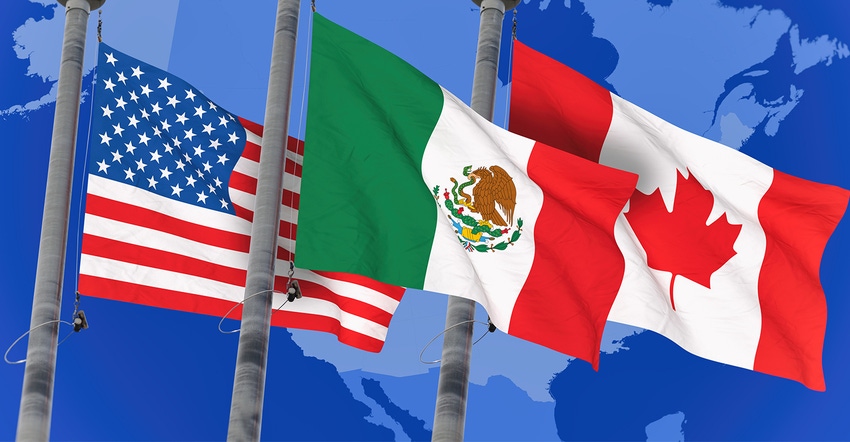Trade pact implementation delayed a month as coronavirus outbreak had just started to surge at end of March.

The Trump Administration notified Congress on Friday that the U.S.-Mexico-Canada Agreement (USMCA) will take effect on July 1, bringing to a close an almost three-year process that President Donald Trump began in rewriting the 25-year-old North American Free Trade Agreement (NAFTA). The three countries still need to wrap up certain requirements in the next two months, but the move triggers the clock for the deal to enter into effect in July.
Following that notification to Congress, the U.S. became the third country to notify the other parties that it had completed domestic procedures to implement the agreement — the final step necessary for USMCA to enter into force.
The step, however, is opposed by many North American business leaders who sought to delay USMCA implementation because of the economic difficulties arising from the spread of the coronavirus pandemic. The deal originally had been anticipated to take effect by June 1 but was delayed as the COVID-19 outbreak had just started to surge.
USMCA’s entry into force marks the beginning of a historic new chapter for North American trade by supporting more balanced, reciprocal trade, leading to freer markets, fairer trade and robust economic growth in North America, the U.S. Trade Representative's Office said in a statement.
The agreement contains significant improvements and modernized approaches to rules of origin, agricultural market access, intellectual property, digital trade, financial services, labor and numerous other sectors. USTR said these enhancements will deliver more jobs, provide stronger labor protections and expand market access, creating new opportunities for American workers, farmers and ranchers.
“The crisis and recovery from the COVID-19 pandemic demonstrates that now, more than ever, the United States should strive to increase manufacturing capacity and investment in North America. The USMCA’s entry into force is a landmark achievement in that effort. Under President Trump’s leadership, USTR will continue working to ensure a smooth implementation of the USMCA so that American workers and businesses can enjoy the benefits of the new agreement,” USTR Ambassador Robert Lighthizer said.
Canada and Mexico are the first- and second-largest export markets for U.S. food and agricultural products, which totaled more than $39.7 billion in 2018. These exports support more than 325,000 American jobs. All food and agricultural products that have zero tariffs under NAFTA will remain at zero tariffs. USMCA is expected to increase agricultural exports from the U.S. by $2 billion and result in an overall increase of $65 billion in gross domestic product.
About the Author(s)
You May Also Like





